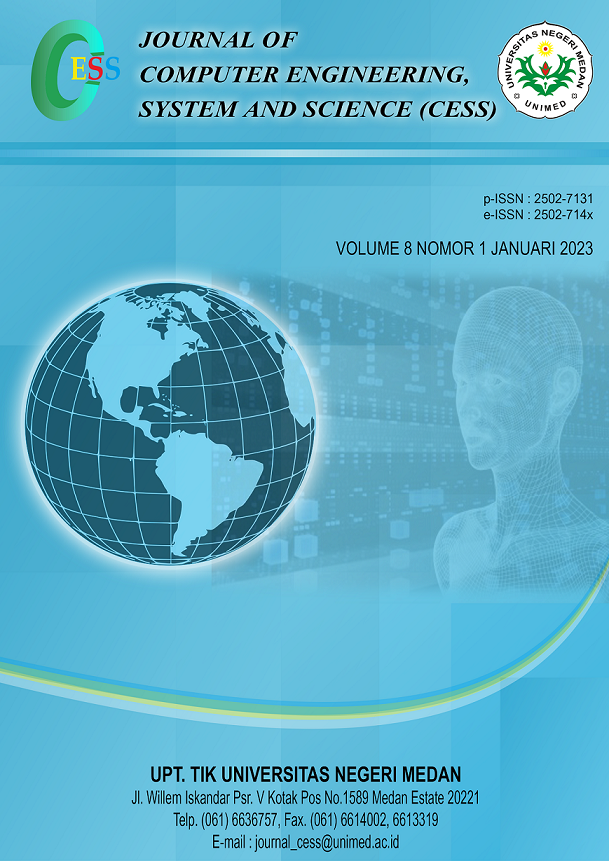Implementation of Intrusion Prevention System (IPS) as a Website-Based Server Security System and Mobile Application
DOI:
https://doi.org/10.24114/cess.v8i1.40258Keywords:
keamanan server, intrusion prevention system (IPS), suricata, iptables, notifikasi otomatisAbstract
Server is a center for providing services and storing data in a computer network. A server is managed by server administrator who has a duty of monitoring security server. While on duty, there are deficiencies in detecting attacks, the slow information about the attacks, and how to handle attacks on the server. In this research, a server security system was created by implementing an Intrusion Prevention System (IPS) based on website and mobile applications. Attack detection focuses on ICMP and TCP port attacks with the latency time when the system responds to an attack is 99,89 ms (very good). The attack handling system was successfully carried out using Iptables against the attacker's IP that detected by the Suricata system through the website and mobile applications, to be given action which is divided into Drop, Reject and Accept. Administrators can quickly take the necessary precautions after receiving an automatic notification when the server is under attack via Telegram with an average speed is 3.41second. The ping attack, port scanning and ping of death (DoS) attacks resulted in an increase in the performance load on the local server with the initial conditions of CPU performance ranging from 10-19%, increasing when a ping attack occurred to 21,6%, memory 41,7%, and disk 19,6%. Port scanning increased by 85,9% CPU, memory 41,9%, and disk 20,3%. Ping of death increased CPU 90,4%, memory 42,9%, and disk 20,8%. Based on the tests that have been done, an excessive increase is found in the ping of death attack which results in server performance increasing to 90,4%, if the attack occurs for a long time then the server condition will be hang (damaged).Downloads
References
Badan Siber dan Sandi Negara, Laporan Tahun 2020 Honeynet Project BSSN - IHP. 2020.
Z. Husen and M. S. Surbakti, Membangun Server dan Jaringan Komputer Dengan Linux Ubuntu. Aceh: Syiah Kuala University Press, 2020.
N. Chakraborty, œIntrusion Detection system and Intrusion Prevention sytem : a Comparative Study, Int. J. Comput. Bus. Res., vol. 4, no. 2, 2013.
W. Ma™ruf K, œPerancangan dan Implementasi IPS (Intrusion Prevention System) Sebagai Pengamanan Jaringan Komputer Berbasis Snort Inline, Univ. Amikom Yogyakarta, vol. 85, no. 1, pp. 2071“2079, 2016.
R. Suwanto, I. Ruslianto, and M. Diponegoro, œImplementasi Intrusion Prevention System (IPS) Menggunakan Snort Dan IPTable Pada Monitoring Jaringan Lokal Berbasis Website, J. Komput. dan Apl., vol. 07, no. 1, pp. 97“107, 2019.
I. Adesty, W. A. Prabowo, and M. F. Sidiq, œPenerapan Intrusion Prevention System (IPS) Suricata Sebagai Pengamanan Dari Serangan Distributed Denial of Service (DDoS), Eeasy Chair Prepr., p. 2912, 2020.
A. F. Mutaqin, œRancang Bangun Sistem Monitoring Keamanan Jaringan Prodi Teknik Informatika Melalui SMS Alert dengan Snort, J. Sist. dan Teknol. Inf., vol. 1, no. 1, 2016.
S. Sinha, Beginning Ethical Hacking With Kali Linux : Computational Techniques for Resolving Security Issues. Apress Publisher, 2018.
D. K. Bhattacharyya and J. K. Kalita, DDoS Attacks : Evolution, Detection, Prevention, Reaction, and Tolerance. Boca Raton, London, New York, 2016.
ETSI, Telecommunications and Internet Protocol Harmonization Over Networks (TIPHON); General aspects of Quality of Service (QoS), vol. 1. 1999.
H. A. Saputra, P. Pohny, and G. M. Putra, œAnalisis QOS Jaringan 4G Dengan Menggunkan Aplikasi Wireshark (Studi Kasus: Tepian Samarinda, Taman Samarinda, dan Taman Cerdas), Semin. Ilmu Komput. dan Teknol. Inf., vol. 5, no. 1, pp. 13“18, 2020.
Downloads
Published
How to Cite
Issue
Section
License
Copyright (c) 2023 CESS (Journal of Computer Engineering, System and Science)

This work is licensed under a Creative Commons Attribution 4.0 International License.















